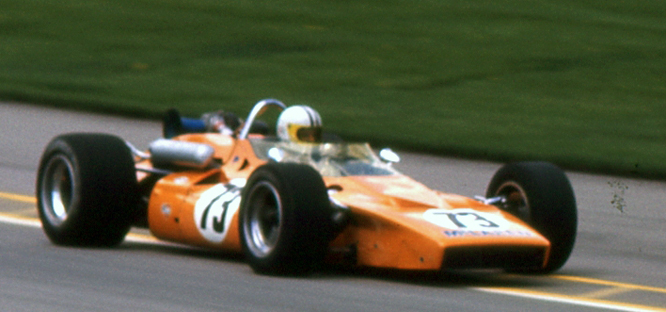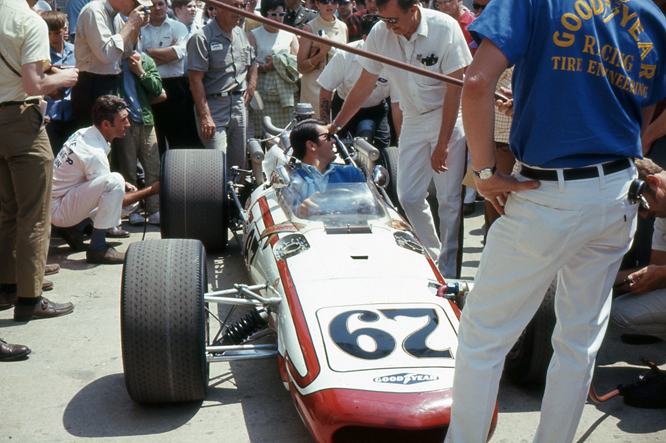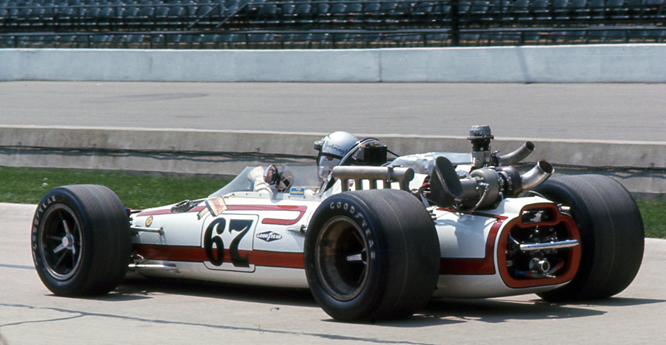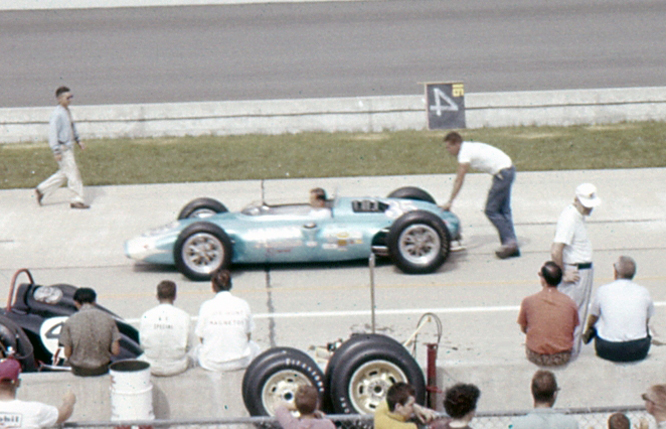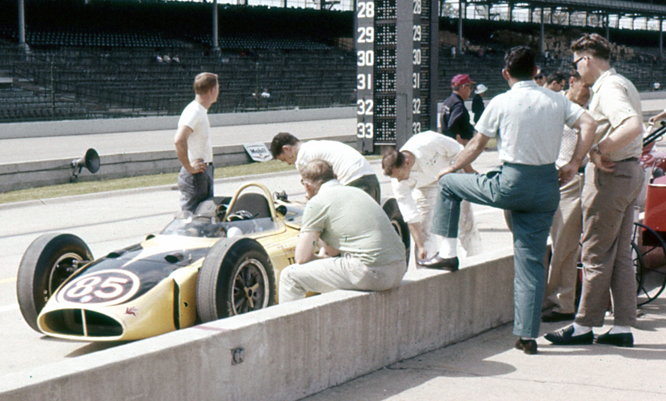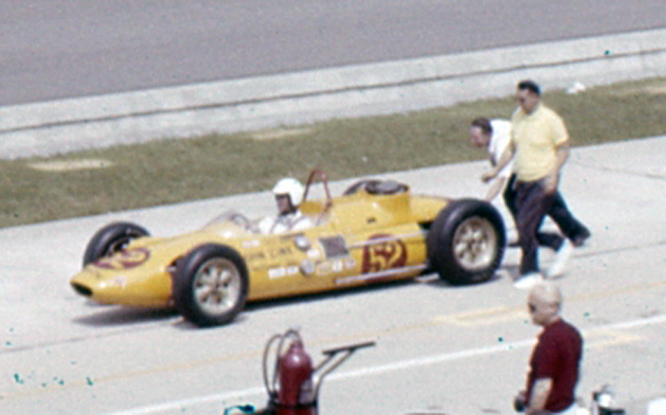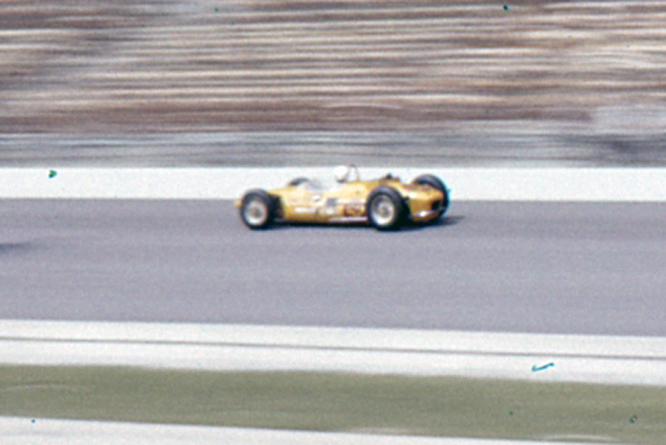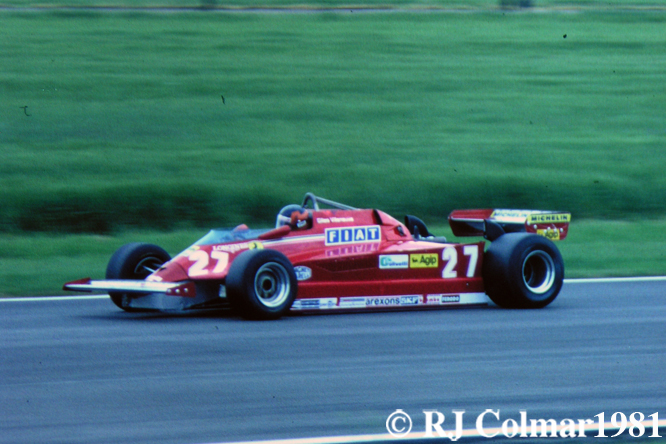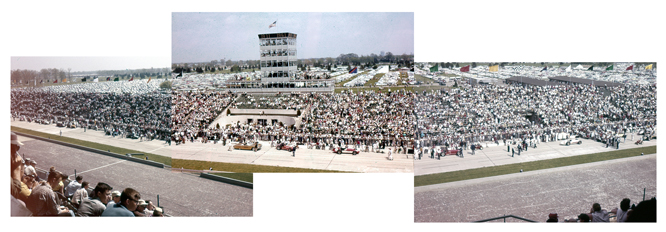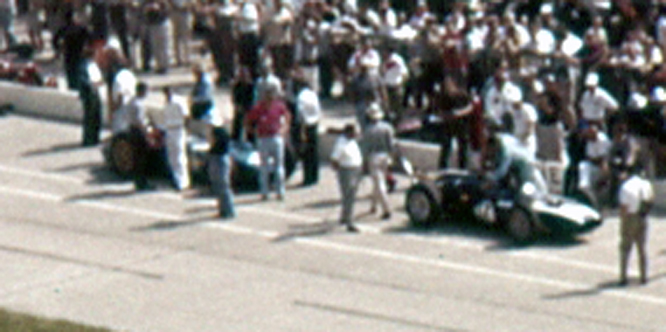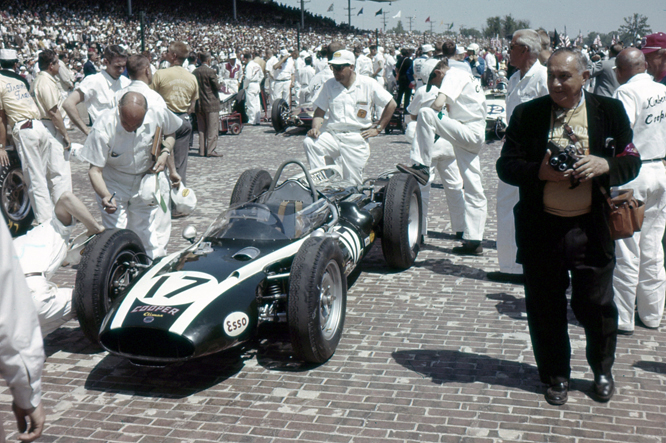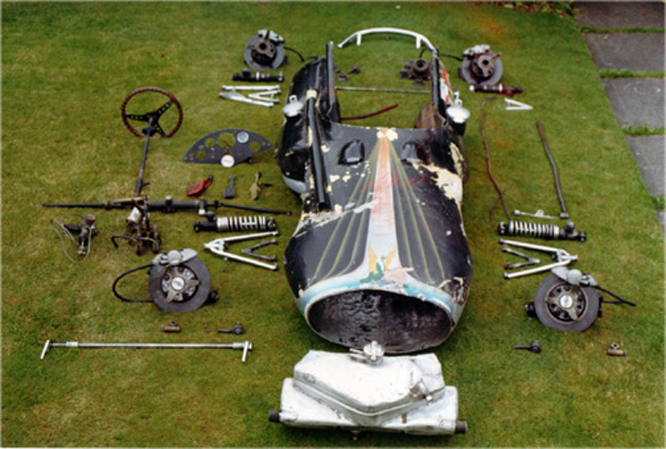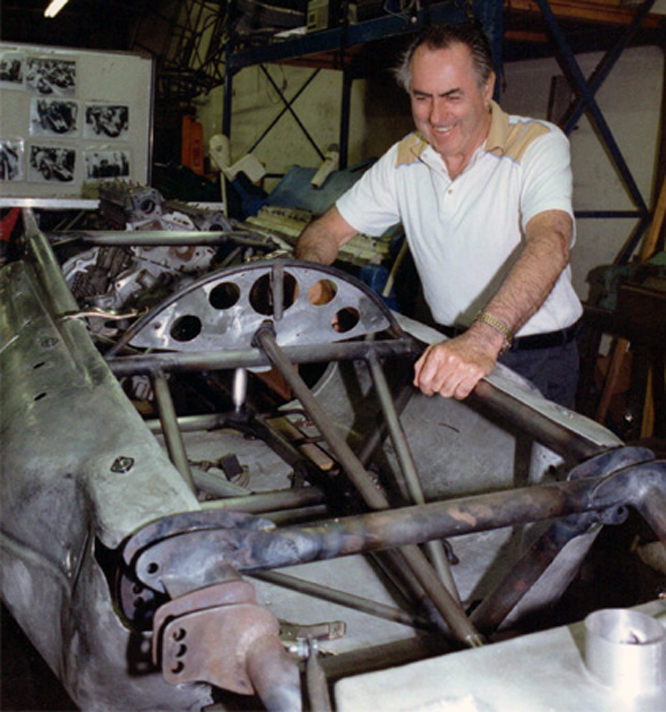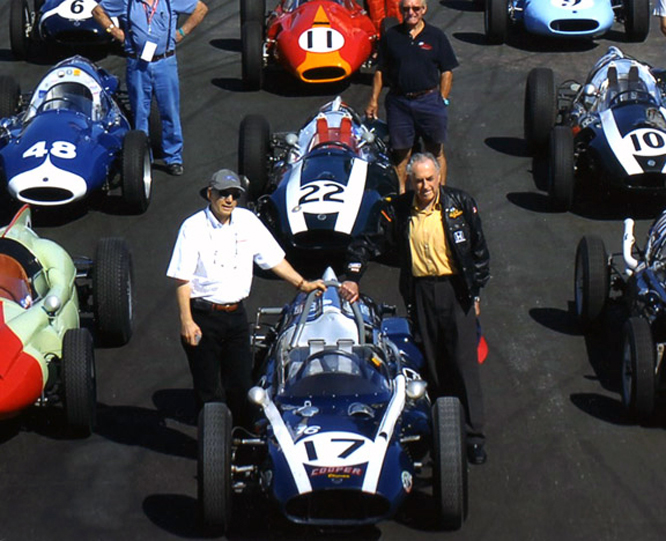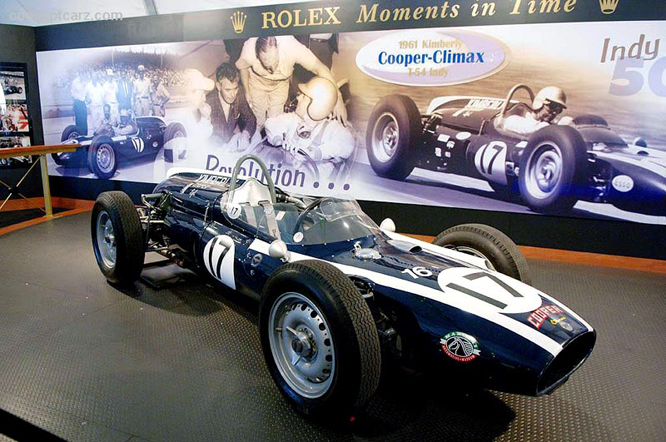This is the only photo to have so far surfaced by Ed Arnaudin at Indianapolis from 1970.
The car is a McLaren M15, based loosely on the Can Am dominating M8 chassis, Gordon Coppuck incorporated numerous parts from the M8 Can Am car into the design of the M15. The stressed aluminium monocoque chassis was held together with 3 steel bulkheads with the 4 cylinder Offy turbocharged engine bolted directly to the rear most and supported by two a frame running form the bulkhead to the bell housing.
The drivers of the cars were originally scheduled to be 1967 world champion Denny Hulme known as ‘The Bear’ in the #73 and Chris Amon in the #75, though team founder, Bruce McLaren also turned a few laps in the #79 spare car on the first day of practice running in a three car line astern McLaren train with fellow New Zealanders Denny and Chris. Bruce however never had any intention of taking the start.
The #73 of Denny caught fire during practice as a result of a fuel leak from a quick release breather cap that had not been properly secured. As Denny slowed the car down the intensity of the largely unseen methanol flames increased forcing him to jump from his car while it was still moving at an estimated 70 mph !
Denny was to miss the 500 due to the burns his hands received, meanwhile Chris Amon was not happy about the Indianapolis track set up, his speed was 3 mph slower than Bobby Unser who tested the #75 and the extent of the injuries received by Denny convinced him to withdraw from the race.
Teddy Meyer team manager drafted Carl Williams into the #75, he qualified 19th and finished 8th, while Peter Revson was drafted into the #73 qualifying 16th he retired from the race with a broken magneto classified 22nd.
2 days after the 1970 Indy 500 McLaren founder Bruce McLaren was killed testing the latest incarnation of the McLaren M8 Can Am car leaving Denny Hulme and Peter Revson to become the back bone of the McLaren team in Formula One, USAC and Can Am series until 1974.
Thank you for joining me on this Team Kiwi edition of ‘Gettin’ a lil psycho on tyres’ I hope you will join me again tomorrow. Don’t forget to come back now !
07 12 12 PS Jerry Entin has kindly informed me that the original plan was for Denny Hulme to drive the #73 but that he burned his hands shaking down the #79 McLaren. As a consequence Peter Revson was drafted in to drive the #73. I’ll be writing a full follow up blog with some interesting new photographs during the month of May.

